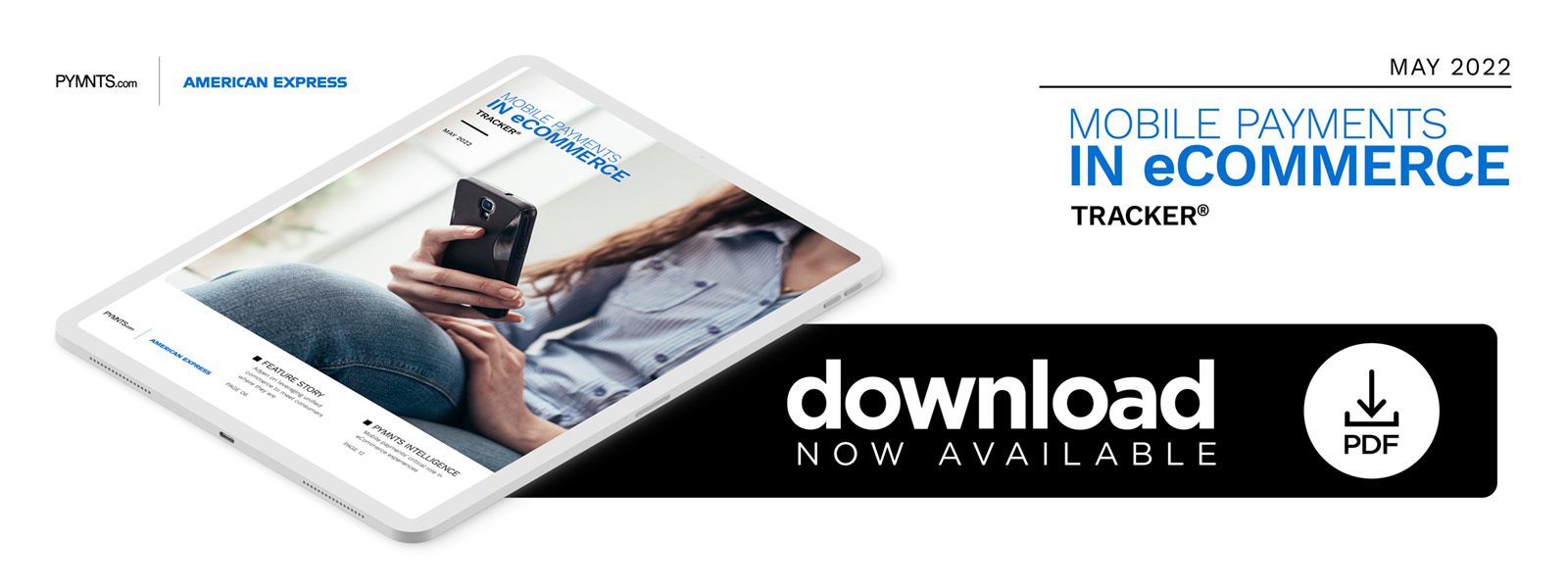PYMNTS Intelligence: Mobile Payments’ Critical Role in Unified, Seamless eCommerce

Online and mobile shopping trends have ensconced themselves as the preferred method for many consumers who either have grown accustomed to digital shopping or prefer the hybrid of purchasing online and curbside pickup.
Consumers are spending more time on digital devices — none more than the ubiquitous smartphone. One recent report projects that sales made on smartphones will account for almost half of eCommerce dollars spent this year. The mobile-device shopping trend has even earned its own moniker: mCommerce, a submarket in which smartphones are expected to generate around 85% of sales in 2022.
With control literally in the palm of their hands, consumers are looking for the best shopping experiences they can find and are willing to walk away from all but the most seamless and secure. PYMNTS’ research shows that two-thirds of online retail shoppers look for ease of shopping when picking a digital merchant, and 59% say they would be unlikely to trust a merchant with whom they have had an unsavory experience.
This prerequisite places the onus of customers’ digital shopping experiences squarely on merchants’ shoulders. To attract customers and retain loyalty, retailers must tailor the shopping experience to consumers who choose to visit digitally, and they must make paying directly from mobile devices easy and secure. This month, PYMNTS Intelligence takes a close look at the importance of a unified, seamless eCommerce experience and how mobile payments form a crucial part of that experience.
Merchants’ Missed Mobile Payment Opportunities
Consumers enjoy the convenience of shopping on their mobile devices, with 76% doing so to save time, according to one report. Retailers, however, may not be keeping their end of the bargain, as their mobile shopping apps apparently need some improvement. Up to 90% of mobile shoppers report experiencing problems such as links and pages too small to click on when using their devices. They also complain of security issues and insufficient product reviews or advice to help inform buying decisions.
Another area in which retailers may be missing the mark is in making the most of mobile shoppers’ tendency to browse. Almost two-thirds of mCommerce shoppers say they are looking for a specific item but are open to impulse buys, and only 20% say they need any one item right away when they are shopping on a mobile device. This represents a major opportunity for retailers to convert shoppers through engaging mobile apps that can help make recommendations based on previous shopping habits, demographic information or through targeted ads that can drive purchases.
Payment frictions can also change the game when it comes to converting mobile shoppers into paying customers. More than one-third of digital shoppers in a U.K. survey said their preferred methods of payment are through chip, PIN or contactless means, and one in five shopping online said they would find an alternative retailer if their first payment choice was unavailable. Similarly, 21% shopping in-store said an unavailable payment method would send them to another retailer.
PYMNTS’ research found that 32% of shoppers said the inability to use preferred payment methods would be an important factor likely harming their trust and comfort in a given merchant. Furthermore, 41% of online retail shoppers and 40% of online grocery shoppers would likely switch if they lost trust in their merchants.
Using Digital Experience to Win Consumer Trust
With consumers relying on their mobile devices for shopping, retailers should look to meet potential customers where they are most comfortable. By some estimates, mobile devices could become the preferred shopping method within five years. Additionally, mCommerce sales are forecast to double by 2025 to more than $728 billion and will make up about 44% of total eCommerce sales in the U.S.
To tap into this market and convert these shoppers into customers, retailers must work to optimize their apps to make it as easy as possible for mobile consumers to find and pay for purchases quickly and seamlessly. An important yardstick will be social media platforms such as Facebook, Twitter and Pinterest, which make it simple to purchase and check out with one-click buy buttons connected to consumers’ payment information.
With mobile devices placing buyers’ power directly into their hands, more and more customers will never need to enter a store to make a purchase. To succeed in an increasingly mobile eCommerce future, retailers must do all they can to bring their stores to consumers.
